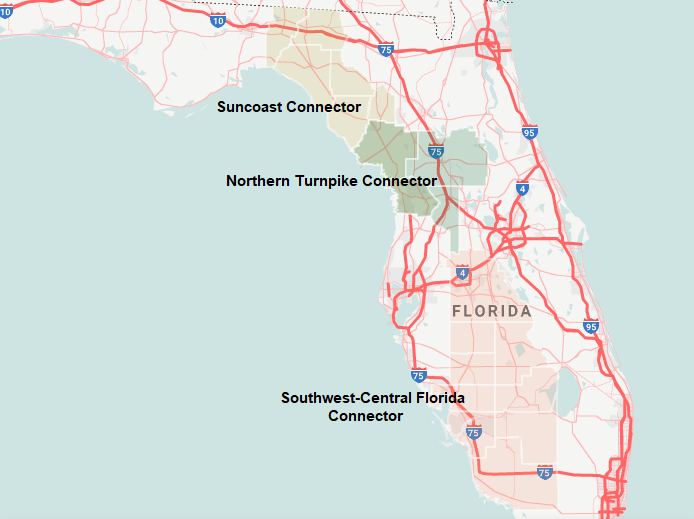Evacuation, economic development touted
 Last spring, the Florida Legislature passed a bill directing the state Department of Transportation (FDOT) to develop routes for three new toll roads in what would be the biggest highway expansion in decades. Three task forces have begun work in what is turning out to be a departure from traditional methods of infrastructure planning in favor of fast-tracking the highways.
Last spring, the Florida Legislature passed a bill directing the state Department of Transportation (FDOT) to develop routes for three new toll roads in what would be the biggest highway expansion in decades. Three task forces have begun work in what is turning out to be a departure from traditional methods of infrastructure planning in favor of fast-tracking the highways.
Usually, FDOT determines the transportation needs of communities based on studies and then proposes specific construction to meet the needs. But the legislature’s bill signed by Governor DeSantis, directed FDOT to plan and build the highways and work out necessary details in task force meetings. It approved $135 million to cover initial costs over the next two years. The ultimate multi-billion right-of-way and construction price tag would come from various transportation trust funds and other pots.
The three highways, referred to as Multi-use Corridors of Regional Economic Significance Program (M-CORES) are:
- The Suncoast Connector, extending about 150 miles from the existing Suncoast Parkway terminus in Citrus County north to the Georgia line in Jefferson County;
- The Northern Turnpike Connector, extending about 30 miles from the northern terminus of Florida’s Turnpike northwest to the Suncoast Parkway; and
- The Southwest-Central Florida Connector, extending about 150 miles from Collier County in Southwestern coastal Florida north to Polk County.
 The corridors would be multimodal with the stated purpose of revitalizing rural communities. The selling points include bringing more jobs, better access to education and healthcare, and ultimately raising the tax base of our lower population and relatively poor rural counties. All without causing environmental harm to some of the most pristine land in Florida.
The corridors would be multimodal with the stated purpose of revitalizing rural communities. The selling points include bringing more jobs, better access to education and healthcare, and ultimately raising the tax base of our lower population and relatively poor rural counties. All without causing environmental harm to some of the most pristine land in Florida.
There’s also a public safety issue. The Suncoast Connector was specifically recommended in The House Select Committee on Hurricane Response and Preparedness Final Report in January 2018, following Hurricane Irma the previous September. Evacuations of 6.5 million Floridians from Irma were severely hampered by road capacity issues.
Detractors though, including members of at least one task force, say they are confused as to what role they are supposed to play in the process. They’ve been told they can’t ask whether the roads are needed, cannot recommend they not be built, but focus instead on where to build them with the least negative impacts, according to a recent Lakeland Ledger article.
FDOT is in charge of deciding the exact route and configuration of the roads and interchange locations and can recommend they not be built. The agency recently testified that it will unveil routes for all three toll roads this January. Per the law, the task forces must issue a written report by October 1, 2020. To the maximum extent feasible, construction of the projects must begin no later than December 31, 2022, and be open to traffic no later than December 31, 2030.
LMA Newsletter of 11-4-19

